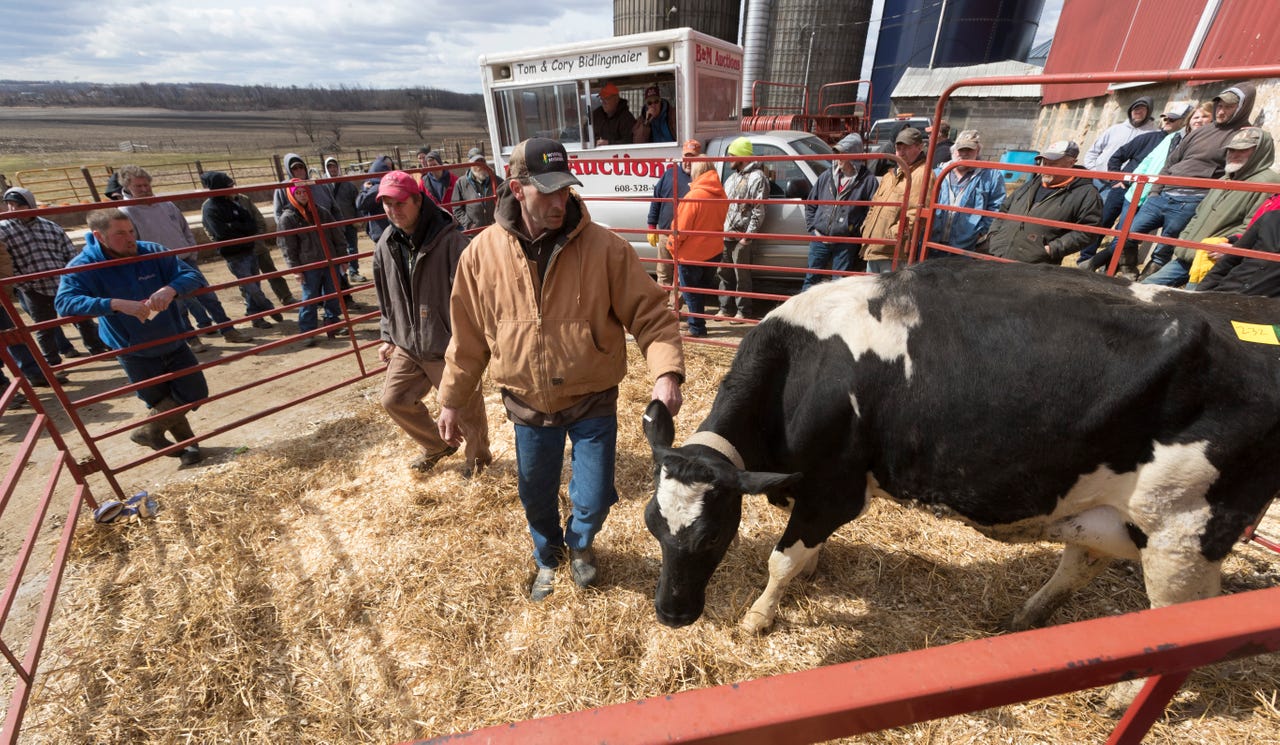
In January 2019, the Pulitzer Center on Crisis Reporting launched Bringing Stories Home, an initiative to help local and regional news outlets do ambitious public service reporting for their communities, with a focus on how global and national problems affect us at home. We are giving our local newsroom partners financial, editorial, and data-driven reporting support as needed, and amplifying the impact of the work by bringing the journalists and their stories into schools, colleges, and public forums to engage citizens about problems and solutions to drive change.
Every year, Bringing Stories Home will support at least a dozen in-depth or investigative reporting projects, along with community outreach and educational programs related to the work. News outlets eligible for participation must serve communities outside of major media markets such as New York, Los Angeles, Chicago and Washington, D.C.
Since January, Bringing Stories Home has yielded 11 high-impact reporting projects on a range of issues—from brazen police corruption in Baltimore and global pressures threatening Wisconsin’s dairy industry to the life-threatening conditions in Central America that are driving migration to communities such as Tucson, Arizona, and Palm Springs, California.
Permanent support for Bringing Stories Home is provided in part by an unrestricted endowment gift from the Facebook Journalism Project. Support for the first year’s projects also comes from the Omidyar Network, the Howard Hughes Medical Institute, the MacArthur Foundation, Humanity United, and other generous donors to the Pulitzer Center’s nonprofit news and education mission.
Below, the first class of Bringing Stories Home grantees share what the Pulitzer Center’s support for public service journalism has meant for their communities.
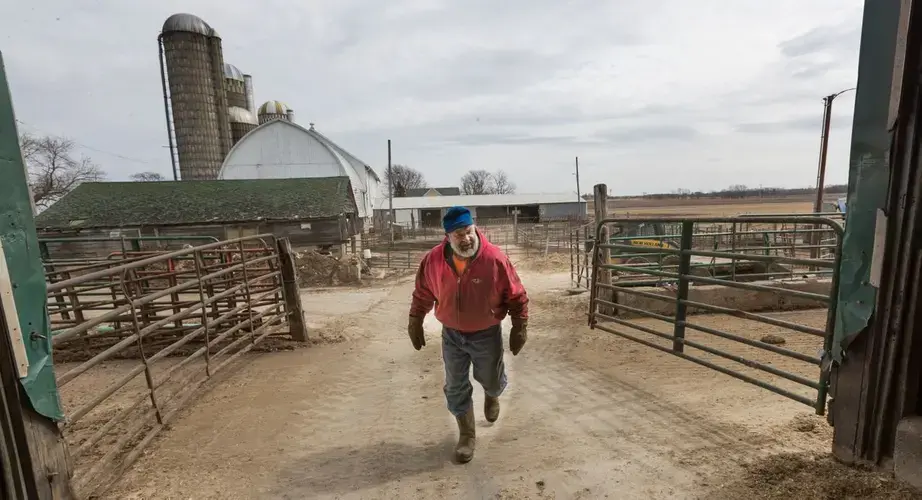
“Dairyland in Crisis”
Lead reporter Rick Barrett, The Milwaukee Journal-Sentinel
Milwaukee, Wisconsin
Wisconsin’s iconic dairy industry is facing an existential threat. With competition from around the world, global dairy prices have plummeted for five years, bankrupting thousands of farms and threatening the livelihood of everyone touched by the once-dominant state industry. The Milwaukee Journal Sentinel came to the Pulitzer Center with a big idea—and a plea for support to investigate and illuminate this important story.
Nearly 3,000 U.S. dairy farms folded in 2018, and Wisconsin led the nation in farm bankruptcies. Reporter Rick Barrett felt it was critical to tell that story to urban readers and policymakers.
“Dairy farms are an essential part of the state's economy, identity and culture," said George Stanley, the Journal Sentinel editor. “Those farms – many of them small operations that have been in families for generations – are increasingly whipsawed by global forces. That's the story we set out to tell and were determined to find a way to tell it to its full potential."
"The support of the Pulitzer Center...has been essential,” Stanley said. “The grant money helped fund reporting trips to see dairy operations in Canada, Mexico, and Vietnam. That reporting identified many connections and common themes that we will explore in stories that will roll out in the coming weeks and months. Those stories will be shared with our sister newspapers in the state, and throughout the USA TODAY Network nationwide.
"We always aim high on our projects and investigations,” he said. But the Pulitzer Center's support "allowed us to aim even higher."
Members of Congress have already cited the first several parts of the series in their calls for changes to agricultural policy.
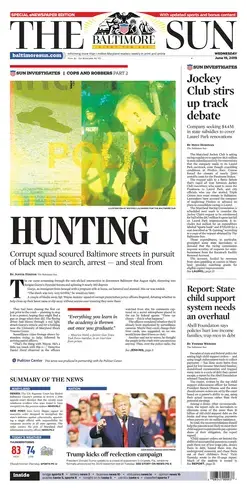
“Cops and Robbers”
By Justin Fenton, The Baltimore Sun
Baltimore, MD
Following the national uproar over the 2015 death of Freddie Gray, an African American man who died of a spinal injury after being roughed up in police custody, Baltimore’s police department was under the spotlight. The Baltimore Sun's police reporter Justin Fenton wanted to investigate how an elite police unit had terrorized city streets, robbing suspects and making money through the illicit sale of confiscated narcotics, and he came to the Pulitzer Center for help.
The Sun’s series, “Cops and Robbers,” is an expansive, three-part multimedia experience detailing how the elite Gun Trace Task Force abused its power and robbed the very people it was supposed to be policing.
“This story was perhaps among the most important to our local community of any we have covered,” said Diana Sugg, special projects editor.
“For decades, the Baltimore Police Department has struggled with dysfunction,” she said. “Through the use of body camera footage, interviews and thousands of pages of court documents and internal files, Fenton was able to expose how aggressively [Sgt. Wayne] Jenkins and his team hunted on the streets of Baltimore: looking for black men to stop and search, in hopes of finding guns, drugs, and money to steal,' and targeting major drug dealers for big scores.
“The corrupt officers manipulated their jobs so they could be seen as stars. At the same time, they were robbing and violating the law," Sugg said.
Following the series’ publication, Fenton and his work were featured on local radio stations and in national news outlets including The Marshall Project, The Athletic, and Poynter. Pulitzer Prize-winning reporters at The Washington and ProPublica were among those who highlighted and shared the stories on Twitter, along with libertarian scholar Walter Olson and actor Josh Charles. Urban talk show host Larry Young said, “This story is being talked about in every barber shop and hair salon in the state.”
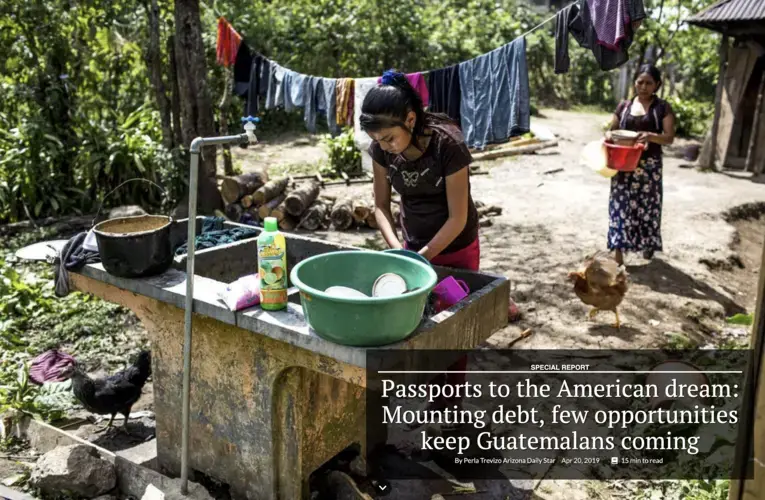
“A Lost Generation”
By Perla Trevizo, Arizona Daily Star/La Estrella de Tucsón, Plaza Pública, Arizona Public Media
Tucson, Arizona
Tucson is one epicenter of the “migration crisis” on the U.S. border with Mexico. Grantee Perla Tervizo traveled to Guatemala to better understand why so many are fleeing their homes for the United States, reporting a multi-part series for the Arizona Daily Star, its Spanish-language sister publication La Estrella de Tucsón, Arizona Public Media and Guatemalan online investigative outlet Plaza Pública.
“We work hard to dig beneath the rhetoric and report the truth of what’s really happening along the U.S.-Mexico line,” Jill Jorden Spitz, editor of the Arizona Daily Star, told us. “We do that for our community, but also to help inform the world beyond, where opinions about the border are strong, but sometimes understanding of life here is weak. In this instance, we found some instances of chronic misreporting and felt it was important to set the record straight, both to our community and to the world beyond.”
The Arizona Daily Star’s reporting uncovered a vicious cycle of debt that forces migrants to take increasingly desperate risks to reach the United States.
“They take huge loans from human smugglers to get across the border, and if they fail, they’re sent back to a country where jobs are extremely hard to come by, and the chance of making enough money to repay their debt is all but non-existent,” said Jorden Spitz. “Many see that their only choice is to take out another loan and try again to get north and send money home.”
Jorden Spitz said the Pulitzer Center’s Bringing Stories Home grant was essential in making it possible for the Arizona Daily Star to tell this story.
“We simply could not have justified a trip to Guatemala,” she said. “We do not budget for travel here, we ask for it when we need it. And in order to prevail, there has to be an obvious local link since we’re a local newspaper. We didn’t have that here, but we knew this was a story that was highly relevant to our local audience, and a story we knew that our expertise on border and immigration issues positioned us to tell accurately and deeply to a national audience.”
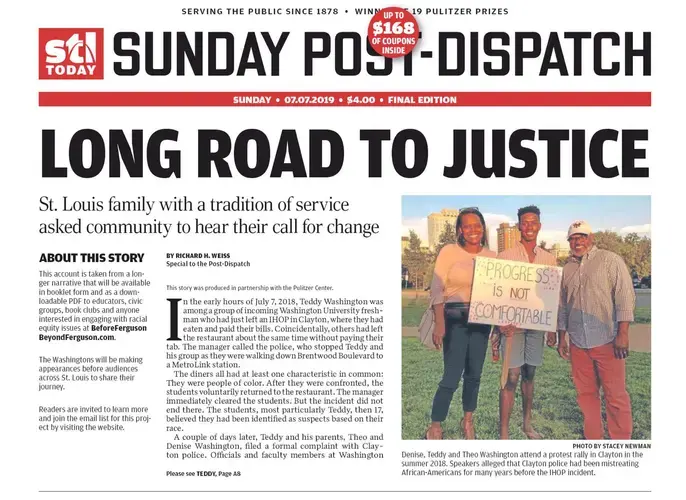
“Before Ferguson, Beyond Ferguson”
Project led by Richard Weiss
The St. Louis Post-Dispatch, St. Louis American, and St. Louis Public Radio
St. Louis, Missouri
Journalist Richard Weiss’s ongoing project “Before Ferguson, Beyond Ferguson” chronicles racial inequities in the St. Louis region. As Bringing Stories Home grantees, Weiss and his team reported on the case of teenager Teddy Washington, who was racially profiled by police at a Clayton, Missouri, IHOP restaurant.
“Clayton police stopped a group of African American students from Washington University in the wake of a dine-and-dash incident at an IHOP restaurant,” said Weiss. “The students were innocent...But they had been frightened by the encounter and felt it was a case of racial profiling. The parents of one of the students, Teddy Washington, filed a formal complaint with the Clayton Police. When the matter became public there was a substantial outcry and a great deal of press coverage locally and nationally.”
One of the goals of “Before Ferguson, Beyond Ferguson” is to humanize people experiencing systemic racism. “For the media, the people involved in such incidents frequently become stick figures in a story that invites the audience to take sides,” said Weiss. “Little attention is paid to the long-term circumstances that led up to a catalytic event and how race is lived day to day and for years and years.”
“With the Pulitzer Center’s support and guidance, we are looking forward to bringing the Washingtons to community events where they can bear witness to their experience and where we can challenge participants...to address racial inequities in their community.”
Weiss’s reporting on the Washington family appeared on the front page of The St. Louis Post-Dispatch, as well as in the St. Louis American, the leading newspaper for St. Louis’s African-American community. Weiss was interviewed with Teddy Washington on KTRS-AM, and St. Louis Public Radio also featured the story.
The Washington family’s fight for justice prompted Clayton government officials to release a plan for addressing racial inequities in the community. “It is a lot more than window dressing,” said Weiss. “Within the plan are frank criticisms about how the city has dealt with minority populations, and a step-by-step approach toward rapprochement.”
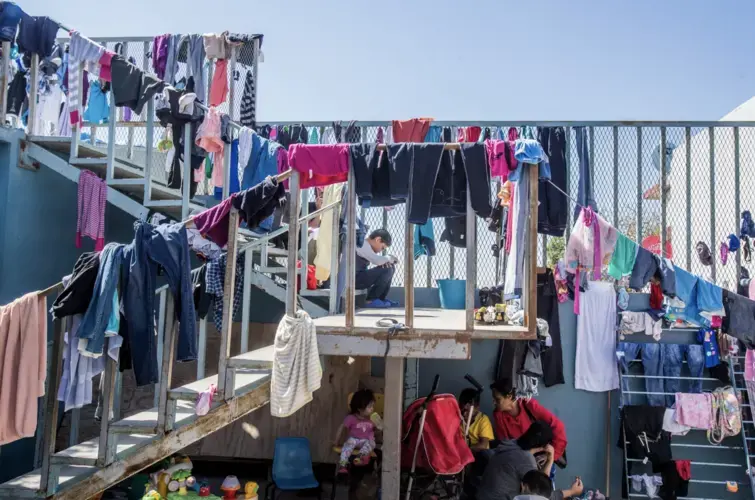
“Fleeing Violence, Mexicans Seek Asylum in the U.S.”
By Rebecca Plevin and Omar Ornelas
The Desert Sun, Salem Statesman Journal, The Arizona Republic, USA Today, and Animal Politico
Palm Springs, California
Writer Rebecca Plevin and photographer Omar Ornelas traveled to Mexico as Bringing Stories Home grantees for the Palm Springs newspaper, The Desert Sun, to better understand the forces driving Mexican migration to the United States.
“In the past year, national headlines about the immigration ‘crisis’ at the border have focused on Central American migrants, coming in caravans,” said Julie Makinen, editor of The Desert Sun. “However, there has also been a significant rise in the number of Mexicans seeking asylum in the United States. We wanted to find out the why behind this trend.
“The fallout from Mexico’s failed drug war is driving a new wave of asylum seekers. Many of these Mexicans are becoming our neighbors. It is important to understand what they’ve been through and what kind of services they need.”
Plevin and Ornelas also reported on how technology is being used by cartels against their victims.
“One surprising thing we found is that thanks to social-media platforms, much of the terror that people are fleeing in Mexico follows them across the border,” said Makinen. “Extortion threats and intimidation over Facebook, Whatsapp, and other platforms is common.”
By partnering with other outlets, the team at The Desert Sun was able to reach a wider audience. “This four-part project was published in The Desert Sun, Salem Statesman Journal, and The Arizona Republic, and parts were also featured in USA Today. In addition, through a partnership with the Mexican website Animal Politico, we were able to reach a bilingual audience on both sides of the border,” said Makinen.
Bringing Stories Home support proved crucial to making this reporting possible. “Our annual travel budget would have been totally consumed by this project alone,” said Makinen.

“Asset Forfeiture in Texas”
By Edgar Walters, Jolie McCullough, Acacia Coronado, and Chris Essig
The Texas Tribune
Austin, Texas
Civil asset forfeiture, the law enforcement practice of seizing cash and property from criminal suspects even if they have never been charged with a crime, is used by many law enforcement agencies across the United States. Critics of the practice call it "for-profit policing." Supported by Bringing Stories Home grants, reporting teams at Al Día en América in Louisville, Kentucky; Kentucky Center for Investigative Reporting; Midwest Center for Investigative Journalism; St. Louis Public Radio; and The Texas Tribune investigated how the practice is used in each newsroom's home state.
“Civil asset forfeiture as a whole is undercovered in Texas. I don’t think it’s been on most citizens’ radar because it’s had so little media attention and it doesn’t spark big court battles or affect powerful political interests,” said Dave Harmon, editor for The Texas Tribune’s investigative and projects team.
“I think we have revealed how commonly it’s used by police in Texas, how often it’s used under questionable circumstances and how often money and property is taken from people when police don’t even file criminal charges.”
To report the story, The Tribune’s team dug into countless courthouse documents to better understand the scope of the issue. “Texas is an enormous state and at the ground level, the laws are enforced by literally hundreds of individual police and sheriff’s departments, which each have the power to seize citizens’ money and property,” said Harmon.
The Pulitzer Center’s support proved crucial to making The Tribune’s and the other investigation possibles. “It was very labor intensive, and we’re a pretty small newsroom, so having support from an organization like the Pulitzer Center is the only way we can do some of these public-service projects,” said Harmon.
Following media attention focused on civil asset forfeiture by these projects, a Supreme Court decision put limits on the practice, and legislators in Kentucky and Missouri have introduced legislation to limit its use.

Project
Cops and Robbers
A Baltimore Sun investigation into a rogue squad of police officers who used the authority of the...

Project
A Lost Generation
How a cycle of debt and increased enforcement is leaving a void in some rural Guatemalan schools and...

Project
Before Ferguson, Beyond Ferguson
Families of color have long been thwarted in finding a quality education. We present the saga of one...

For decades, people have migrated from the Mexican state of Guerrero for economic reasons. But now...
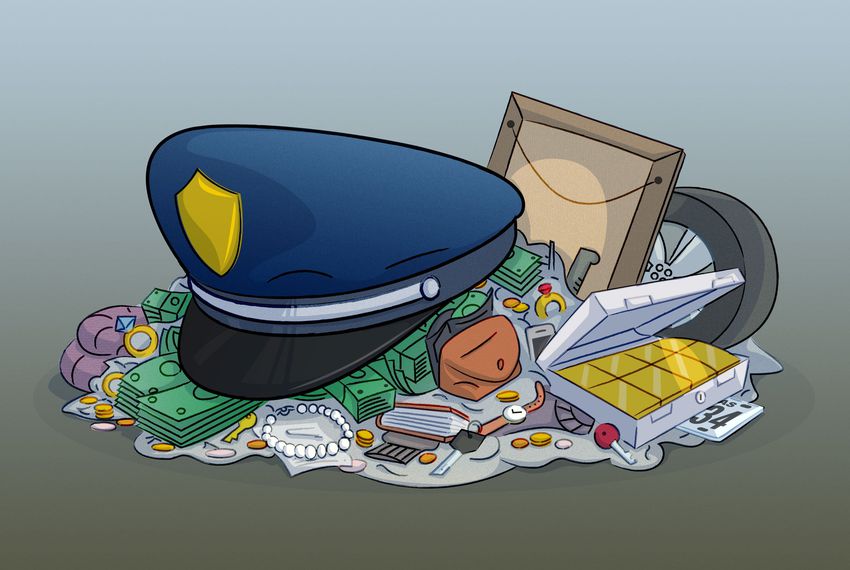
Project
Asset Forfeiture in Texas
In each of Texas' 254 counties, a host of local agencies can use civil asset forfeiture to help...




















